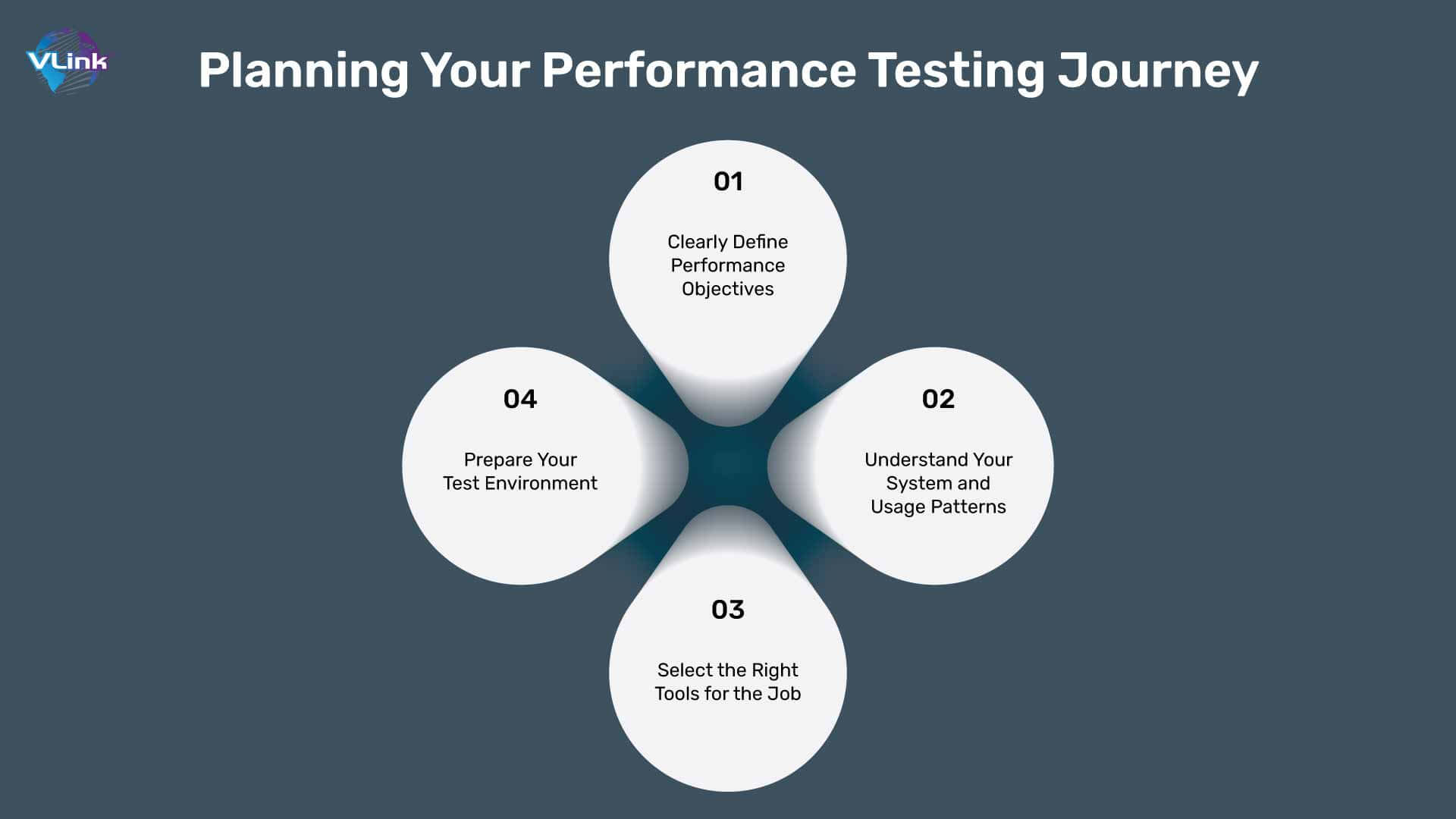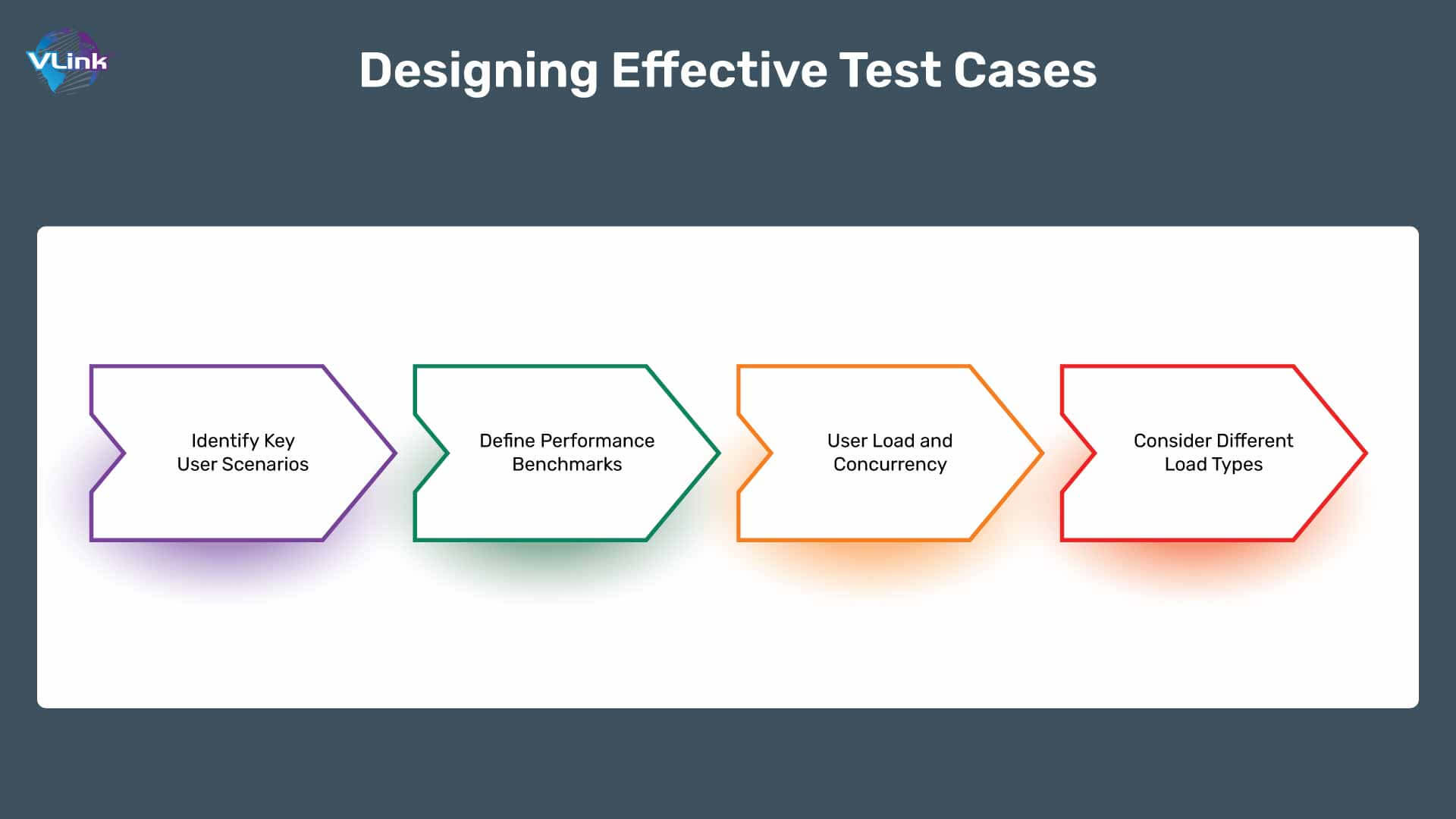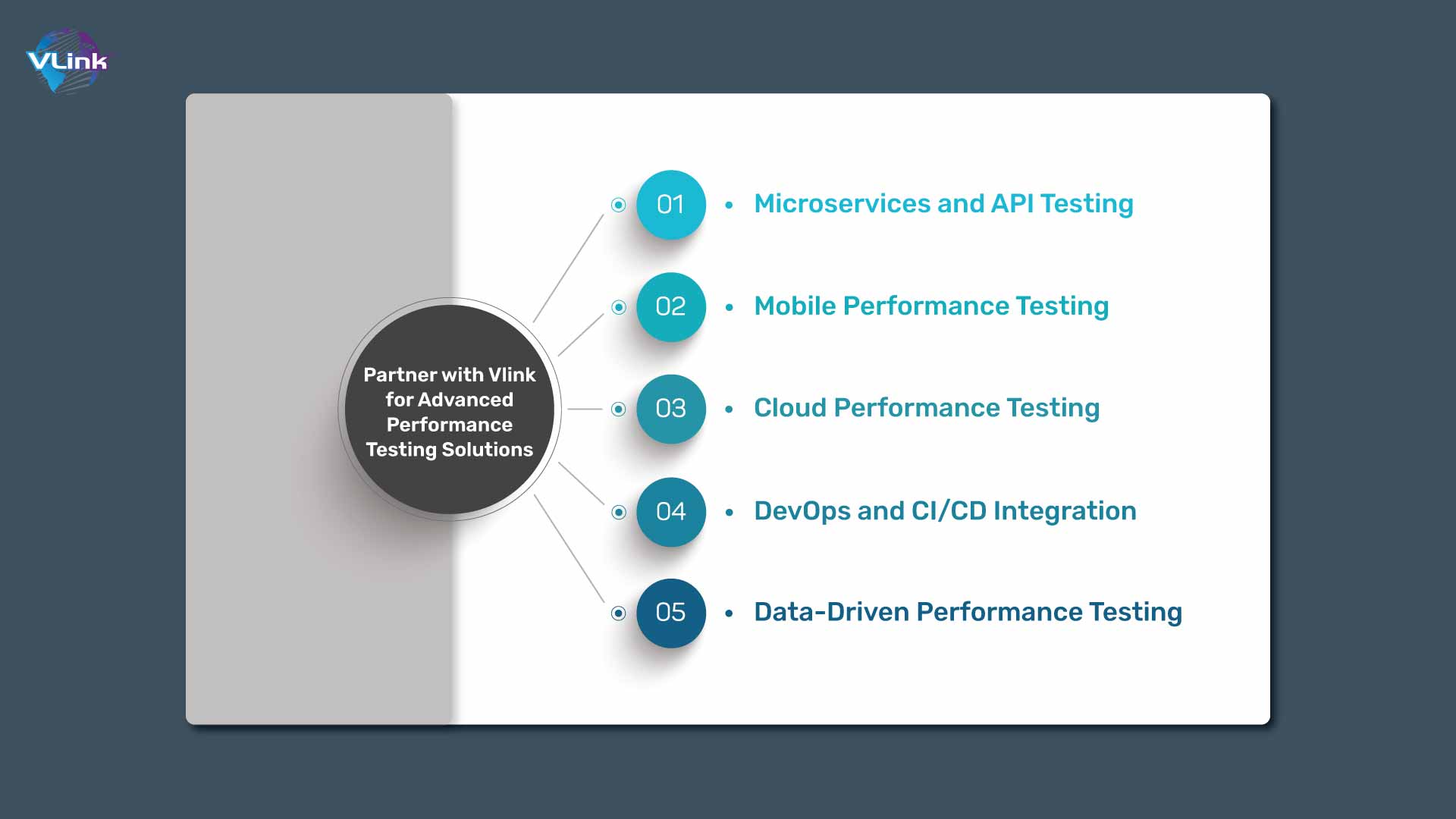In today's fast-paced digital world, ensuring flawless application performance is paramount. Performance testing empowers you to proactively identify and mitigate bottlenecks before they impact user experience (UX) and revenue. This blog delves into the meticulous and rewarding process of planning, designing, and executing performance test cases, equipping you with the knowledge and tools to optimize your applications.
Planning Your Performance Testing Journey

Clearly Define Performance Objectives:
Establish measurable goals aligned with your application's intended use, target audience, and expected load. Quantifiable objectives like response times, throughput, and resource utilization guide your test case design and analysis.
Understand Your System and Usage Patterns:
Thoroughly map your application's architecture, identify critical components, and analyze historical usage data (peak hours, user distributions). This knowledge aids in pinpointing potential bottlenecks and tailoring test scenarios.
Select the Right Tools for the Job:
Consider factors like test type (load, stress, spike), budget, and resource limitations. Popular tools include LoadRunner, JMeter, ApacheBench, and Gatling. Vlink's performance testing experts can advise on the optimal toolset for your unique needs.
Prepare Your Test Environment:
Set up a dedicated testing environment to ensure accurate results, ideally mimicking your production environment. Vlink offers comprehensive testing environments to replicate real-world conditions seamlessly.
Read More: Benefits Of Outsourcing Software Testing Services for Businesses
Designing Effective Test Cases

Identify Key User Scenarios:
Prioritize tests that emulate real-world usage patterns like login, search, checkout, and standard API calls. Capture these scenarios in detailed test cases.
Define Performance Benchmarks:
Establish baseline performance measures based on historical data or industry standards—track deviations during testing to identify areas requiring improvement.
User Load and Concurrency:
Gradually increase the number of simulated users and concurrent requests to expose potential scalability issues. Vlink's expertise in creating realistic load-injection patterns ensures representative testing conditions.
Consider Different Load Types:
Include load, stress, and spike tests to understand how your application handles various load profiles.
Read More: The Role of Automated Testing for Software Product Development
Executing Test Cases and Analyzing Results

Thorough Test Execution:
Meticulously run all designed test cases, monitoring key performance indicators (KPIs) like response times, throughput, and resource utilization. Vlink's automation capabilities streamline test execution and data collection.
Analyze and Interpret Results:
Compare results against established benchmarks and performance objectives. Identify bottlenecks, performance deviations, and areas for improvement. Vlink's performance testers deliver insightful reports and visualizations to aid root-cause analysis.
Refine and Optimize:
Iterate your test cases based on identified issues. Adjust load profiles, test scenarios, or application configuration to improve performance. Vlink provides continuous performance improvement recommendations.
Additional Considerations:
Security: Incorporate security considerations into your performance testing plan to ensure a comprehensive evaluation.
Scalability: As your application and user base grow, ensure your performance testing strategy adapts to accommodate future needs.
Collaboration: Foster open communication and cooperation among performance testing teams, developers, and business stakeholders to ensure alignment and shared goals.
Read More: How Does AI Change Quality Assurance in Automation Testing?
Beyond the Basics: Advanced Performance Testing Techniques
Now that you've grasped the fundamentals of planning, designing, and executing test cases for performance testing, let's explore some advanced techniques to enhance your testing effectiveness further.
1. Performance Testing for Microservices and APIs:
Shift-Left Testing: Integrate performance testing earlier in the development lifecycle for microservices and APIs, leveraging tools like Pact and API-Mocker to isolate and test individual components.
Chaos Engineering: Introduce controlled chaos using tools like Gremlin or Chaos Monkey to assess your system's resilience to unexpected failures and ensure stability under unpredictable conditions.
2. Performance Testing for Mobile Applications:
Network Emulation: Use tools like Charles Proxy or Fiddler to simulate different network conditions (cellular, Wi-Fi, varying bandwidth) and analyze their impact on mobile app performance.
Real Device Testing: Conduct performance testing on actual mobile devices to capture device-specific behavior and ensure optimal user experience across different hardware configurations.
3. Performance Testing for Cloud-Based Applications:
Horizontal Scaling Simulation: Evaluate how your application scales horizontally by simulating increased compute resources using cloud automation tools and monitoring resource utilization and performance metrics.
Vertical Scaling Simulation: Assess the impact of increasing vertical resources (RAM, CPU) on application performance using cloud scaling capabilities and performance monitoring tools.
Read More: UX Testing Demystified: A Step-by-Step Guide to Improving User Experiences
4. Performance Testing for DevOps and Continuous Integration/Continuous Delivery (CI/CD):
Performance Regression Testing: Integrate automated performance tests into your CI/CD pipeline to catch performance regressions early and ensure consistent performance with every code change.
Performance Canary Analysis: Gradually roll out new code versions to a small subset of users and monitor performance impact before full deployment, using tools like Canary deployments.
5. Data-Driven Performance Testing:
Leverage Historical Data: Use historical usage data to create realistic load profiles and test scenarios that reflect user behavior, leading to more accurate performance insights.
Machine Learning for Load Injection: Utilizing machine learning algorithms to analyze past load patterns and predict future demands enables dynamic load injection for more efficient testing.
NOTE: Performance testing is an iterative process. Continuously analyze results, refine test cases, and optimize your application for optimal performance and user satisfaction.
Read More: Benefits of Automation Testing in Mobile App Development
Why Choose Vlink for Performance Testing
Proven Expertise: Vlink boasts a team of seasoned performance testing specialists with extensive experience across diverse industries and technologies.
Comprehensive Solutions: Vlink offers a full spectrum of performance testing services, from test plan creation and tool selection to execution, analysis, and optimization.
Cutting-Edge Tools and Infrastructure: Vlink leverages industry-leading performance testing tools and maintains a scalable testing infrastructure to provide accurate and comprehensive results.
Customized Approach: Vlink tailors its performance testing solutions to your specific needs and budget, ensuring an optimal return on investment.
Ongoing Support: Vlink's performance engineers readily assist you throughout the testing process and beyond, offering expert guidance and problem-solving.
Read More: Latest Trends in IT Augmentation Services 2024
Partner with Vlink for Advanced Performance Testing Solutions

Vlink goes beyond basic performance testing, offering advanced techniques and expertise to elevate your testing practices.
Microservices and API Testing: Vlink leverages specialized tools and frameworks to thoroughly test microservices and APIs in isolation and within the overall system.
Mobile Performance Testing: Vlink's mobile testing team, equipped with diverse devices and network emulators, delivers comprehensive mobile app performance assessment.
Cloud Performance Testing: Vlink's cloud expertise and automation tools enable accurate performance testing in various environments and configurations.
DevOps and CI/CD Integration: Vlink seamlessly integrates performance testing into your DevOps pipelines, ensuring continuous performance assurance.
Data-Driven Performance Testing: Vlink's data scientists leverage historical data and machine learning to create intelligent load profiles and optimize testing efforts.
By partnering with Vlink, you gain access to a team of performance testing specialists who can guide you through every step, from selecting the right tools and techniques to implementing advanced strategies and deriving actionable insights.
That’s it! I hope this blog provides valuable insights into advanced performance testing approaches and underscores the benefits of partnering with Vlink for success.
Read More: Hire the Top 5% of Test Automation Engineers | Fixed Cost, Hourly or Monthly
Conclusion
By following the above steps and leveraging Vlink's expertise, you can confidently embark on your performance testing journey, ensuring your applications perform flawlessly and delight your users. Remember, performance testing is not a one-time event; it's an ongoing process that requires continuous monitoring, analysis, and optimization. Invest in our effective performance testing solution to deliver a seamless and competitive user experience.
Frequently Asked Questions
Depends on app criticality, development pace, and traffic. Regularly for critical apps less often for others.
Better user experience, scalability, reduced costs, increased resilience, and data-driven decisions.
Choosing tools, creating realistic scenarios, interpreting results, and integrating them into development.
Experts, comprehensive solutions, top tools, custom approach, ongoing support.
Ready to optimize your app performance? Talk to our experts today!














